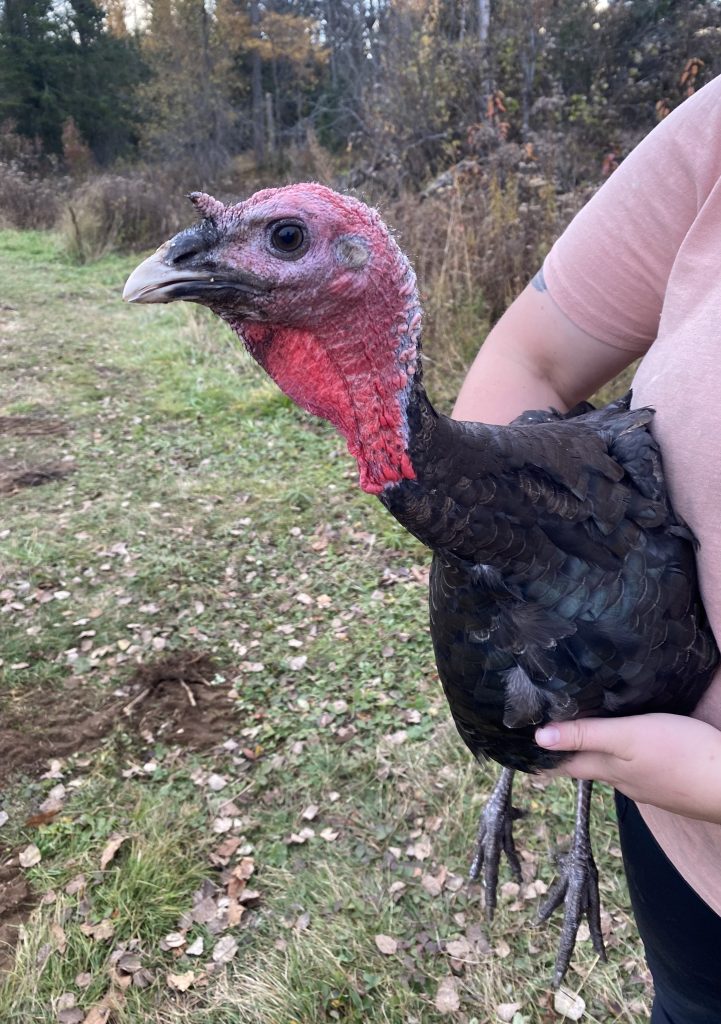Two and a half square feet: that’s the amount of space per bird that is recommended by the National Turkey Federation. Their guidelines are actually published in pounds per square foot, but two and a half square feet per bird is what 15 lb/ft2 boils down to when you consider that an average tom weighs somewhere in the 35-40 pound range. That doesn’t sound like very much space, does it?
Conventionally raised turkeys are crowded into warehouse style barns by the thousands. This is problematic for several reasons. Being housed exclusively indoors with feed provided to them via automated systems, the turkeys never have the opportunity to forage as is their instinct. They lack adequate space to engage in other natural behaviors, and so resort to pecking out one another’s’ feathers out of frustration. In order to reduce feather pecking and cannibalism, the beaks of young turkeys are often trimmed and the lighting in barns is kept dim. High stocking densities in indoor production systems also lead to elevated levels of dust, ammonia, and other noxious gases, which cause damage to the respiratory tracts and eyes of the turkeys as well as the workers who are exposed to the polluted air. Soiled bedding and droppings are only removed from the barns at the end of the turkeys’ lifetime, generating tons of waste all at once that must be hauled away.
The story is very different with pasture raised turkeys. On many farms, turkeys are given a large area in which they can freely roam. On farms where predator pressure is higher (as is the case on our farm), turkeys may be confined to a mobile enclosure that is moved once or twice a day to provide the birds with fresh grass for grazing and a new space in which to forage for seeds and insects. In either case, the turkeys have room to run, jump, and flap their wings. They also have plenty of fresh air and sunlight: two things that conventionally raised turkeys never experience. Instead of generating tons of waste that must be scraped out of the barns and disposed of, their droppings are deposited onto the ground and incorporated into the carefully managed soil, acting as a natural fertilizer for plant regrowth. On our farm, poultry are also processed on site, so they never experience the stress of being transported to a slaughter facility.

Not only are pasture raised turkeys the humane and environmentally sustainable choice, there are health benefits associated with consuming pastured poultry. Studies show that pasture raised poultry has less saturated fat, and more polyunsaturated fat, which is better for cardiovascular health. Studies also show that pasture raised poultry has higher levels of protein, collagen, vitamin E, and omega-3 fats.
So where can you find a pasture raised turkey? If you’re local, you can order a turkey from us! If you live elsewhere in the northern New York region, there is a good chance that there is another Adirondack Harvest member farm raising turkeys near you. For folks in other states, the Food Animal Concerns Trust has compiled a national list of pastured turkey producers.
Works Referenced:
https://www.sciencedirect.com/science/article/pii/S003257911931449X
https://www.humanesociety.org/sites/default/files/docs/hsus-report-turkey-welfare.pdf
https://www.foodanimalconcernstrust.org/nutritional-benefits